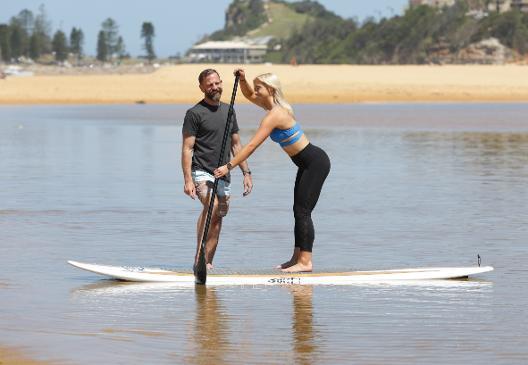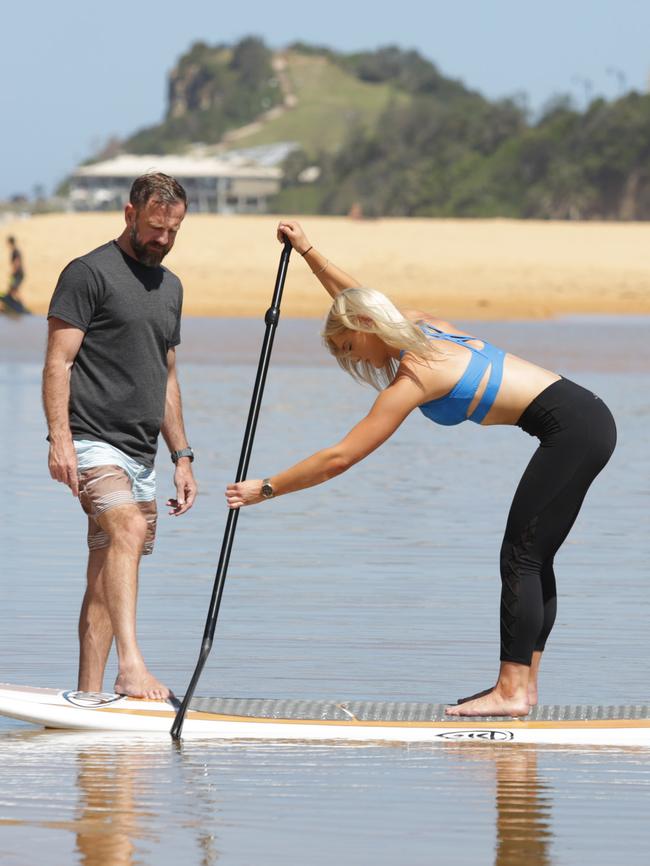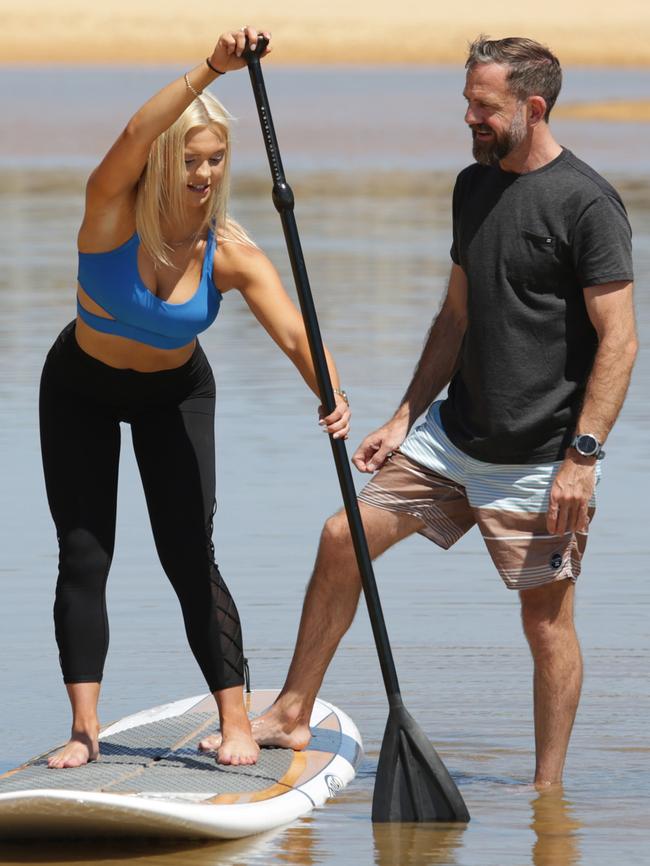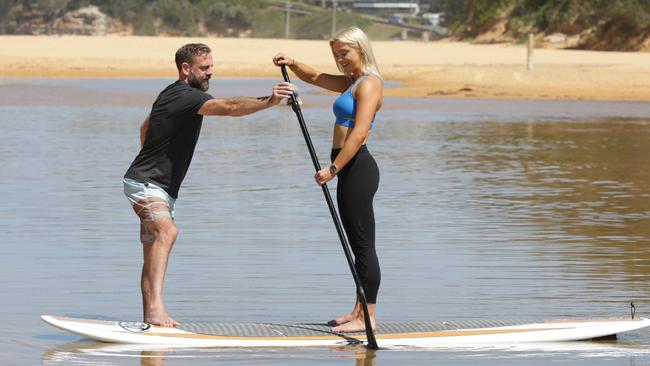Five most common paddle board mistakes and how to fix them
SO you’ve got yourself a stand up paddle board (SUP)? Here’s five things you and every other beginner have been doing wrong.

Central Coast
Don't miss out on the headlines from Central Coast. Followed categories will be added to My News.
SO you’ve got yourself a stand up paddle board (SUP)? Here’s five things you and every other beginner have been doing wrong.
The Express Advocate has asked sports physiologist Glenn Phipps — of Movement Lab — who has trained many of the world’s top paddle boarders for his five most common mistakes and how to correct them.


1/. CHECK YOUR BACK
Those who end up with wrecked backs from a couple of enthusiastic new SUP sessions fall into two camps. There are those who know they need a straight back and end up over compensating by arching their lower back and those who neglect their back entirely and resemble a flamingo with its head down. If you ensure you sit back after your stroke, like you’re about to sit back in a chair, your back should look after itself and your next day paddle reflections will be more happy memories than cursing back pain.

2/. HINGE, NOT SQUATTING
The majority of injured people I see in my practice come from a quad dominant style of moving. That is, they tend to rely on the muscles around the front thighs to dominate movements from picking up items off the ground, to sitting and standing. On the board, this translates to a squatting style of movement, as opposed to hinging at the hips. This can mean compression on the spine, as well as problems with the knees and ankles. Worse still, the squatting style usually comes with one knee being slightly forward, which puts a compressive and twisting force on the spine. Instead, look to start your stroke through hinging at the hip, and sending the hips backwards, and letting your weight shift into the paddle.
3/. KNEES APART
Knees collapsing in, as if they’re suddenly knock kneed, is usually part of the hinge versus squat problem mentioned above, however, it isn’t exclusive. Knees collapsing towards each other will result in muscles around the hips being less active in protecting the back and cause undue stress on the knees themselves. It may also impact balance and weight distribution, which will become more obvious in the ocean than on the flats. Keep your knees about shoulder width apart throughout your stroke.

4/. DON’T PADDLE ACROSS THE BODY
Most beginners grab a paddle and start hacking at the surface with their lower hand near the water and their top hand at various angles across their body. Then they wonder why they can only take two or three strokes before having to swap sides as their board starts to turn. This action just pushes water away from the board, hence the turning. Instead get both hands over the water on the side you are paddling and keep the paddle upright, not angled across your body.


5/. PULL THE BLADE OUT AT THE FEET
Summer paddle boarding can resemble flocks of hunchbacks floating around shovelling water behind them in some vain mockery of council-led pothole filling. Water leaving the blade behind the body is a waste of energy and pushes the board down rather than forward. Pulling the blade out of the water next to the feet stops this and also means less rounding of the back and leaning too far over, which is good for your back, balance, energy consumption and speed.




